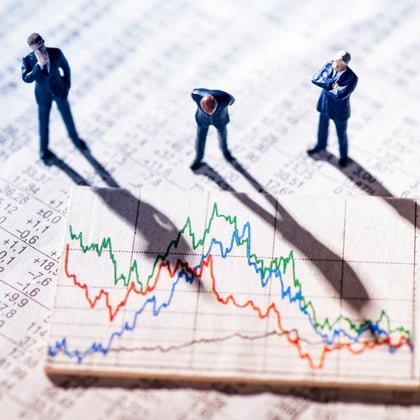What You Need to Know
- Two consecutive quarters of decline in the gross domestic product is the unofficial definition of a recession.
- Other common recession indicators, including inflation, mortgage rates and unemployment, are very mixed.
- Whether or not we are officially in a recession, it is important for advisors to help their clients prepare for any potential weakness in the economy and the markets.
There is much controversy and discussion in the media as to whether or not we are currently in a recession, or even what defines a recession.
Let’s start with the definition of a recession. The traditional, though unofficial, definition is that a recession occurs when the economy experiences two consecutive quarters with a decline in the gross domestic product. This has in fact occurred; the GDP suffered a 0.9% decline in the second quarter on the heels of a 1.6% decline in the first quarter of 2022.
This definition of a recession is not official, however. Recessions are officially declared by an organization called the National Bureau of Economic Research. NBER’s Business Cycle Dating Committee says that “a recession involves a significant decline in economic activity that is spread across the economy and lasts more than a few months.”
As of yet, NBER has not declared that we are in a recession. it generally doesn’t declare a recession until a number of months after the fact, and thus that so far it has made no declaration that we are (or were) in a recession is not surprising.
Why Is There Controversy Over the Definition of Recession?
One likely reason for the controversy over the definition of a recession is that there is no definitive definition. The closest thing we have to an official declaration of a recession is from a group of academics who don’t declare we are in a recession until well after its onset.
Add to this the fact that the word “recession” is very politically charged, and you have all of the ingredients for controversy. Some politicians may say we are in a recession and seek to blame their political rivals for the state of the economy. As 2022 is a midterm election year, it’s likely we will see much of this until the November elections.
Beyond the lack of a hard and fast definition of a recession and the ongoing debate among politicians, economists and other financial experts as to what constitutes a recession and whether or not we are in one, the characteristics of each recession are a bit different.
For example, the last major recession spanning the 2007 to 2009 timeframe saw a severe downturn in the housing market and significant levels of unemployment. If we are indeed in a recession now, this would be perhaps the first recession marked by an uptick in the level of employment.
The recent July jobs report showed the economy added 528,000 jobs for the month, which eliminated the jobs lost during the pandemic.
So Are We in a Recession?
This is a bit of an ongoing debate among many parties in the media and elsewhere. For example, Federal Reserve Chairman Jerome Powell has indicated many times that he doesn’t think we are in a recession. He cites the strong job market as well as other areas of the economy that are doing well as indicators that the U.S. economy is not currently in a recession.
While there have been layoffs in the tech sector — including companies such as Shopify, Netflix and Robinhood — other sectors saw solid gains in employment levels elsewhere. The leisure and hospitality sector as well as the professional services sector in particular have recently reported significant gains.
The solid gains in employment, coupled with the low unemployment rate might indicate that we are not currently in a recession.









 August 10, 2022 at 01:02 PM
August 10, 2022 at 01:02 PM











